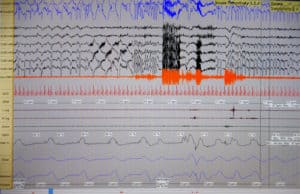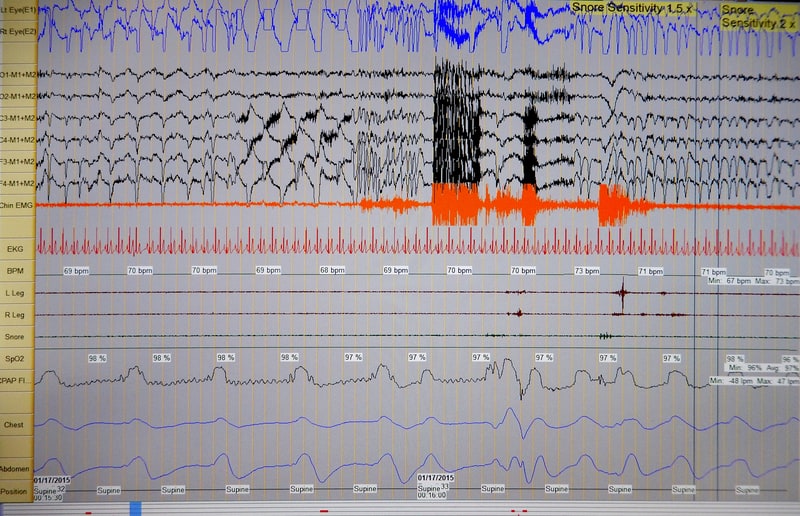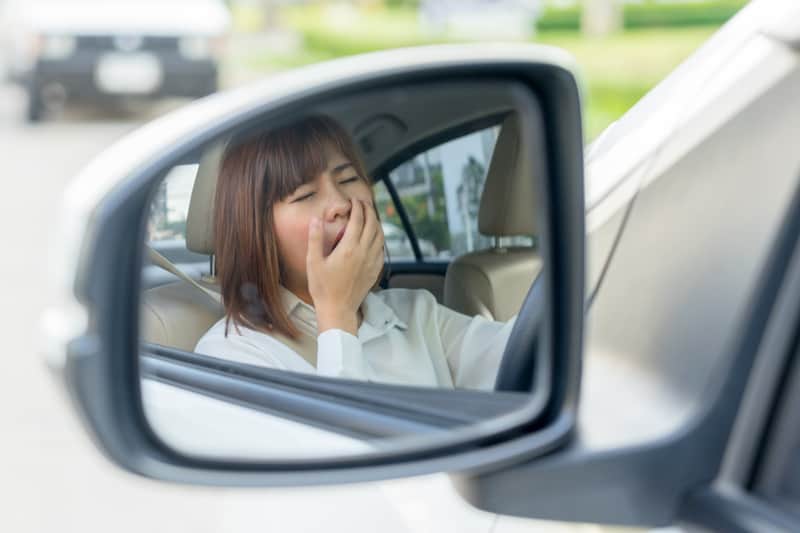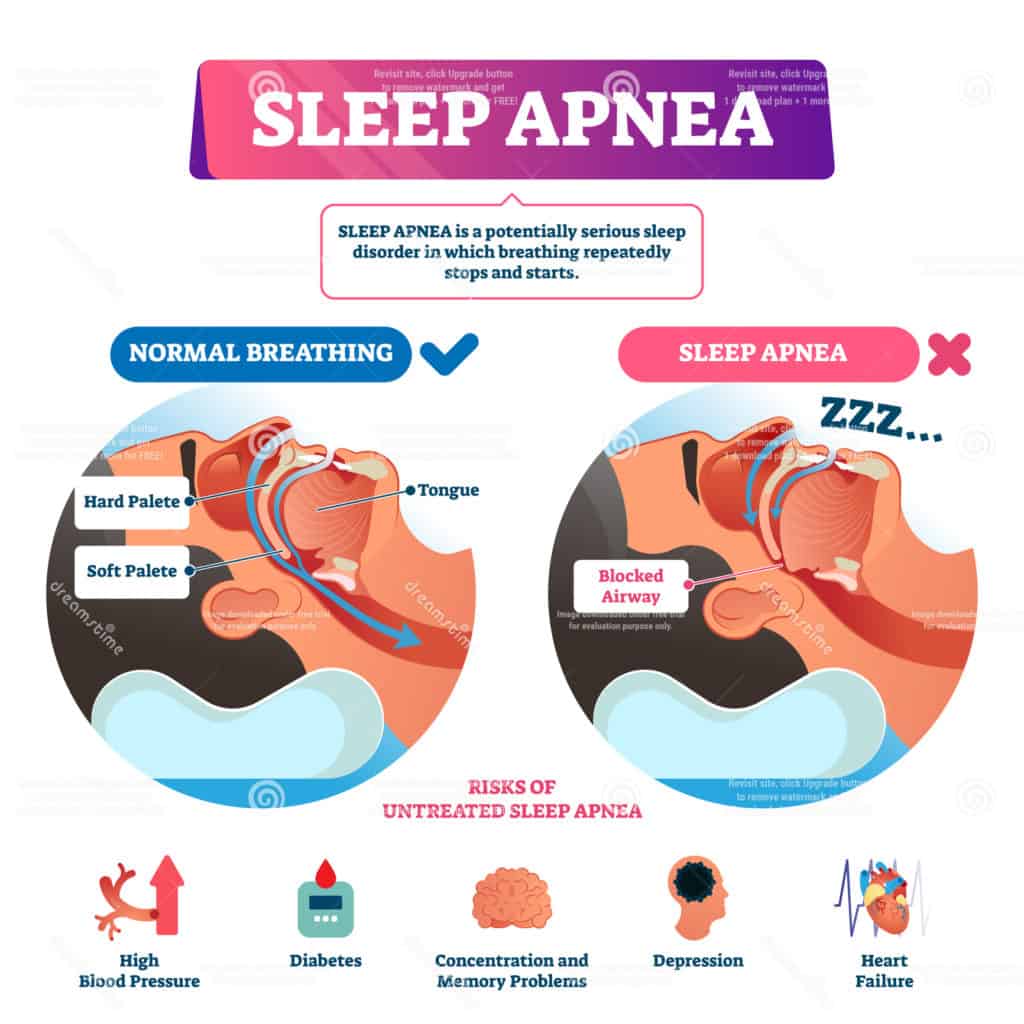
Polysomnography is also called a comprehensive sleep study.
Polysomnography records your brain waves, the oxygen level in your blood, heart rate, and breathing, as well as eye and leg movements. It is used to diagnose sleep disorders, not just Obstructive Sleep Apnea (OSA)
What happens when you take this test?
First off, this is an in-lab test or in a hospital setting in some areas.
Sleep technologists usually greet you. These are trained individuals. They will place electrodes from the top of your head down to your feet using washable glue, which does come off easily. Some techs. will give you a little insight into what they saw on your test. Others will let your doctor read the interpretation.
What are they looking for?
- How many times did you stop breathing
- For how long did you stop breathing
- How low did your oxygen saturation go
- Are the events obstructive, central, or mixed.
- What else is going on? Such as heart rate, blood pressure, recovery time
Depending on your insurance and the answers to the above, the rest of the test will take two paths.
Some insurances will pay for you to do two nights, most will not. One night the diagnostic part of the test and, if necessary, the treatment part of the test would be a separate night. What may get in the way of completing a one-night study? The patient mostly seldom is it the tech.
Sometimes the patient is uncomfortable falling asleep somewhere different, and of course, the many wires get in the way a bit. But it doesn’t take long for a good tech to get the needed information. I often hear from clients, “I never fell asleep.” Yet I’m looking right at the test that shows me they did.
What can you do to have a successful test?
First, if you are a current cpap user, you will want to ask your doctor how long can you go without CPAP. For some who have a cardiac component, the number of nights maybe none of just a couple.
For others with just OSA, it is usually a week off your CPAP. Check with your doctor to make sure. This allows your airway to return to normal and allows the techs to titrate you to the correct pressure.
Now, if you are new to CPAP
- Stop the caffeine very early in the day.
- Eat an early meal. At least 3 hours earlier
- Take a walk outside in the sun for a few minutes. This will help with the natural circadian rhythm of the body.
- Some doctors will give sleeping meds for the test. That’s open for debate. Some say it will alter the results.
The goal is to find the lowest pressure to stop the airway from closing. Chemicals can alter this. Most people sleep harder when using meds. or alcohol thus requiring higher pressures to open up the airways. These pressures may need to be altered once therapy begins at home. Much easier to start clean and free of chemicals.
And of course, it’s easier to get both diagnosis and treatment done simultaneously.
Sometimes you may go to sleep just fine. But the tech has a hard time figuring out what is the best pressure or pap device to use. Such as a single pressure unit CPAP (Continuous Positive Airway Pressure) or a Bi-level unit. Two pressure pap device, that has two pressures coming at you, however on the exhale phase of the breath the pressure drops a bit making it easier to exhale.
OSA (Obstructive Sleep Apnea) and CSA (Central Sleep Apnea)
Central Sleep Apnea is the least common of the two. This is when the brain is not telling you not to breathe. Kind of scary isn’t it? The good thing is it is very treatable. This does show up on the test. And usually will be treated with paps that are specially made for this.
Obstructive Sleep Apnea is very common. I have heard numbers as high as 1 in 10 has the problem. When I worked in the Bay Area of Northern CA. I worked with so many folks that I thought for sure I had got them all. But they never stopped coming. I use this example often if your sink was plugged up what would you do? You figure out how to get whatever is in the way out of the way. That may be a plunger or draino. CPAP works to move whatever is in the way out. This allows the airway to remain open and the oxygen to get to all your organs.
The most common treatment these days for OSA is an Auto CPAP. More on this in another article.



